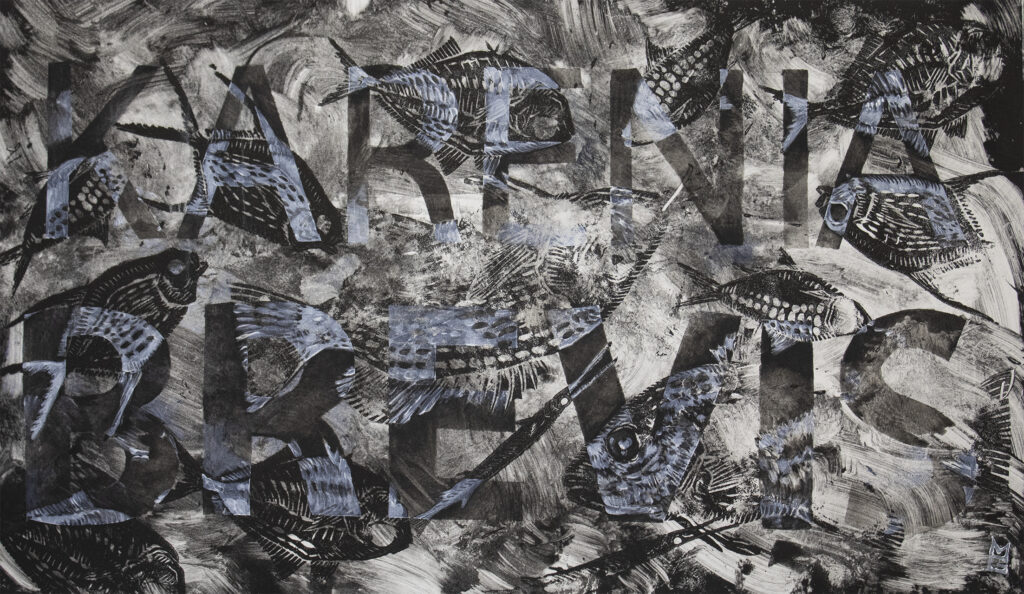
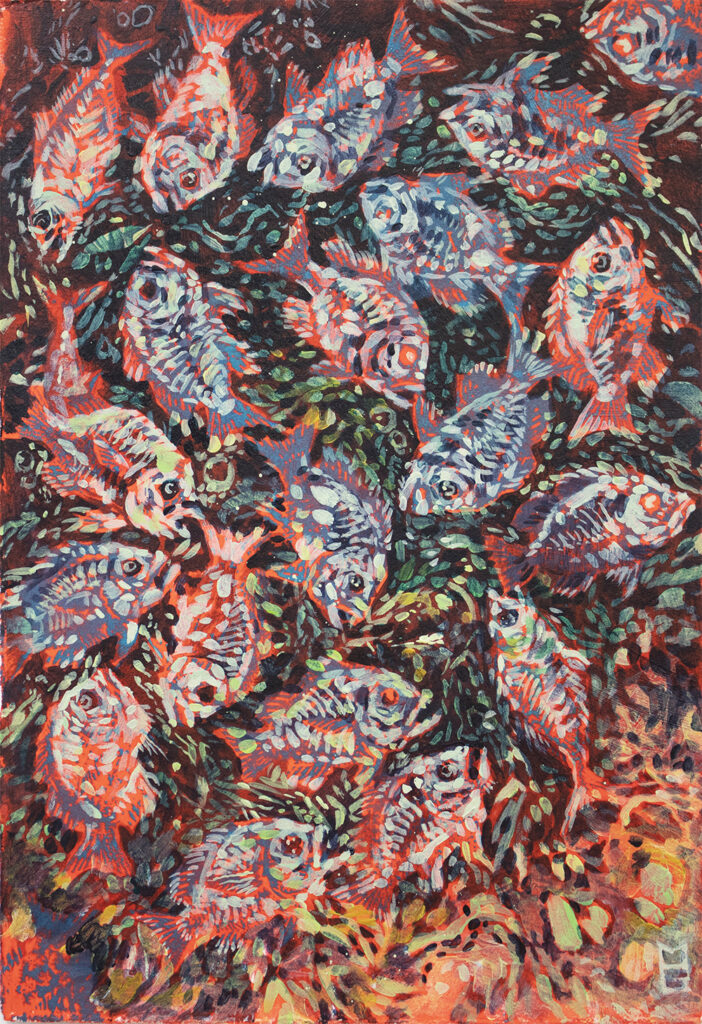

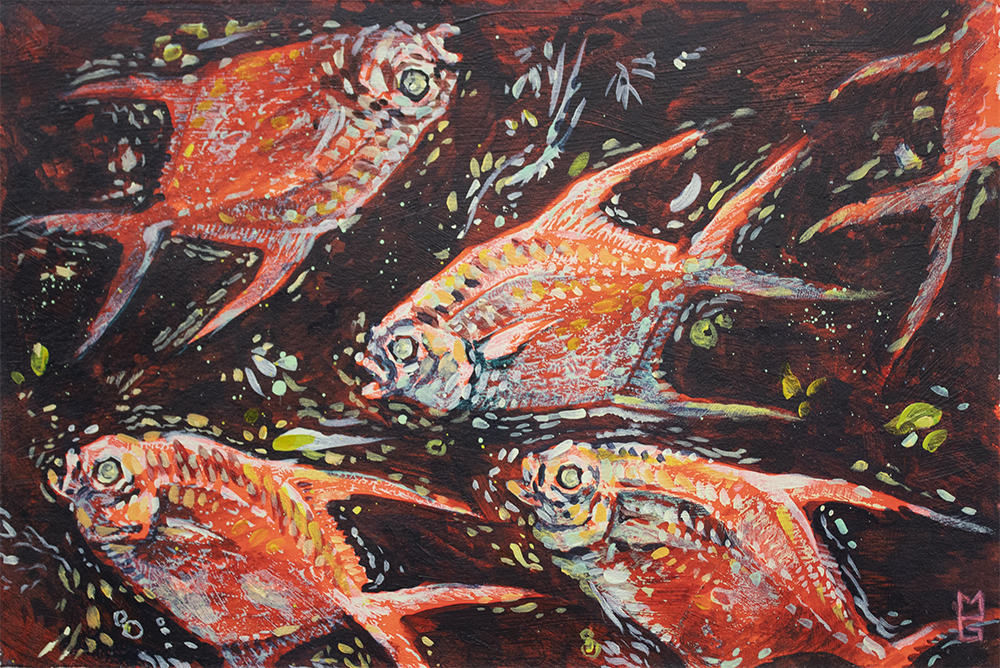
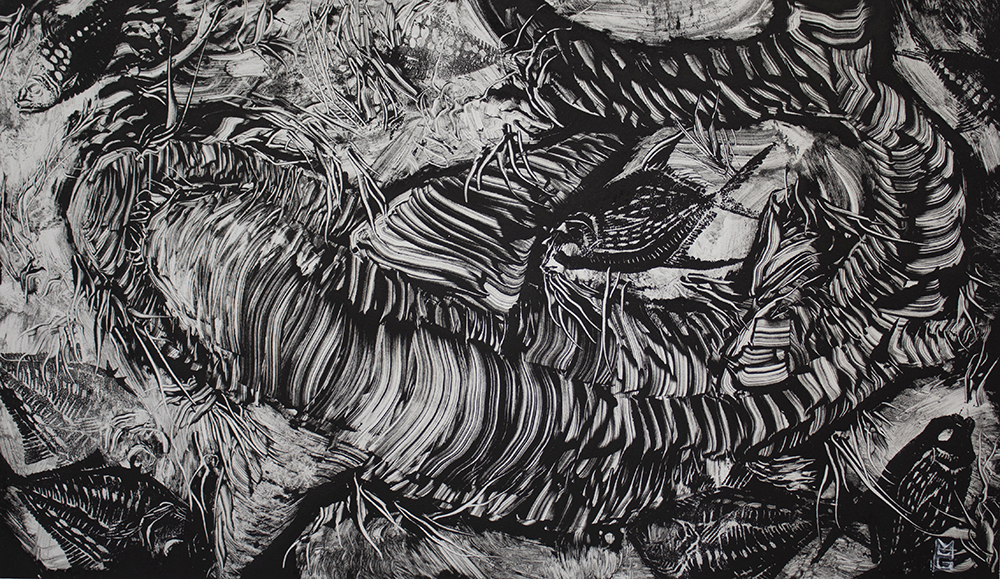
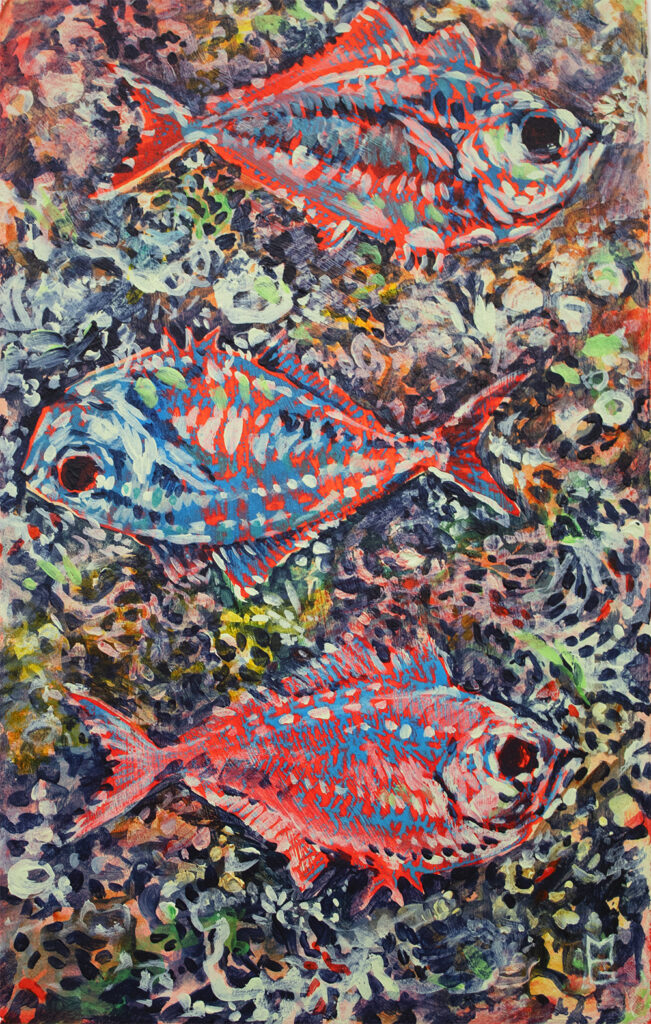
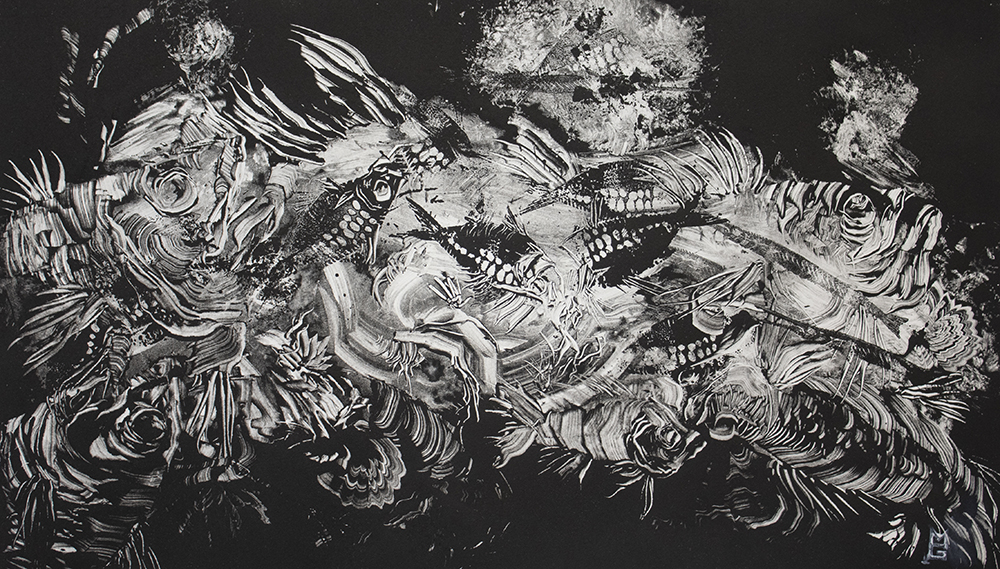
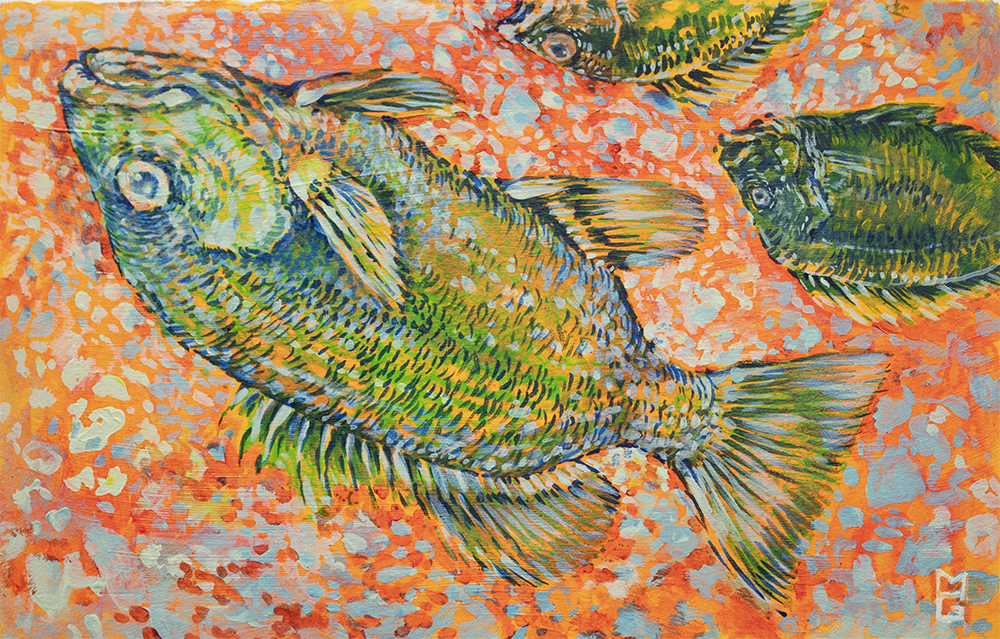
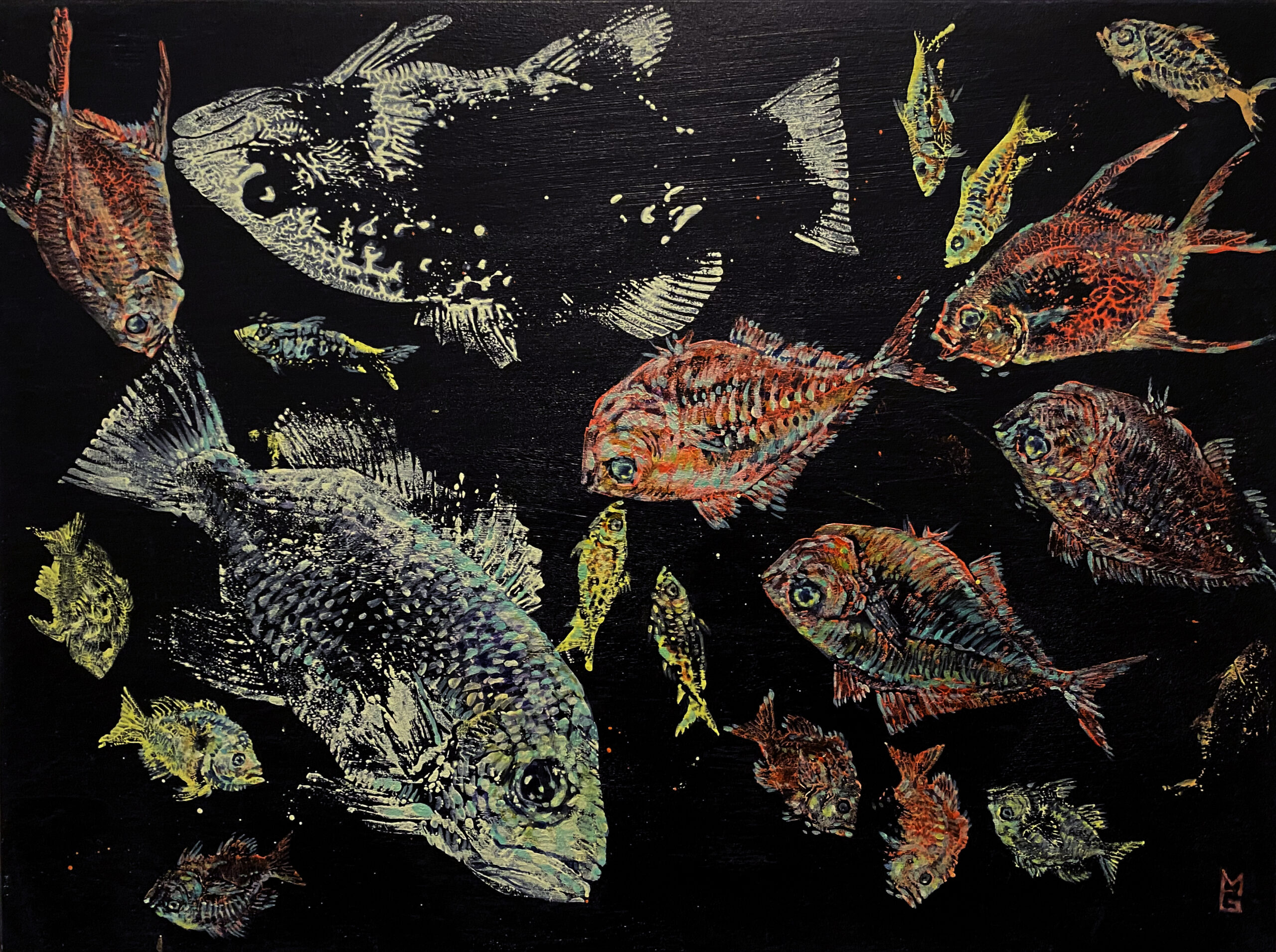
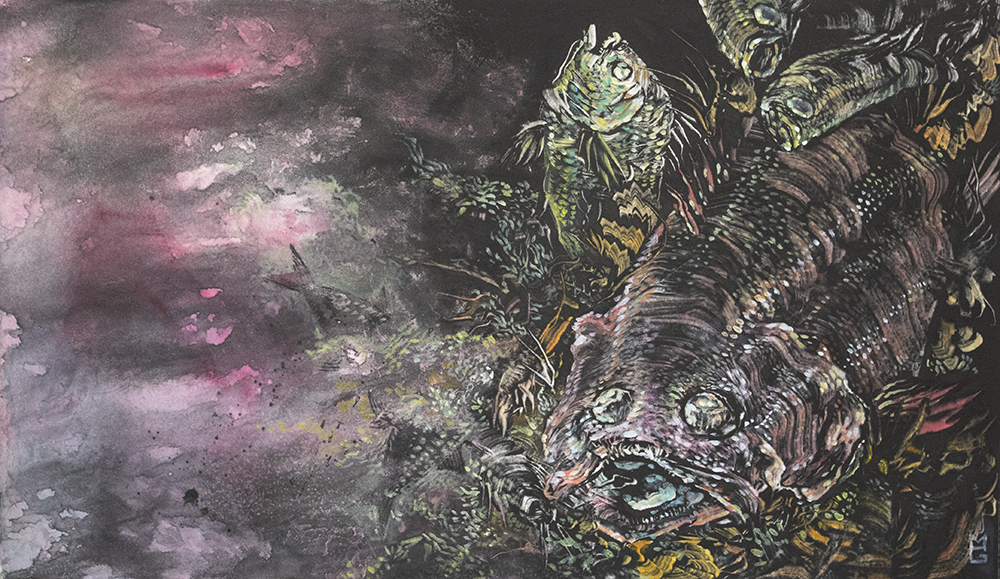
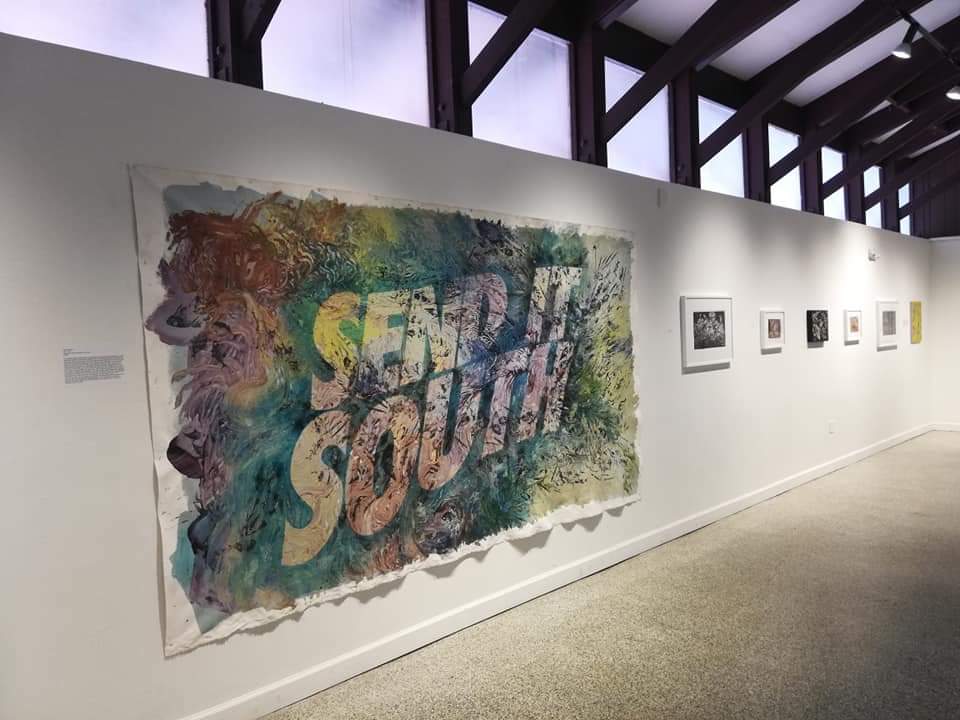

Onshore is a series of works composed of paintings, linocut prints, and monotype prints. These works depict the impact of the Karenia Brevis algae blooms, known best as Red Tide, and the overall state of Floridian water systems. Fish are some of the most abundant creatures on earth and are also some of the most delicate life forms in existence. For this reason, we can choose to view fish as the canary in the coal mine when it comes to water quality and proper handling of waste. In 2018, many Floridians witnessed, smelled, and suffered the effects of massive fish kills (that not only affected fish but scores of marine animals) that plagued both the east and west coasts of the Sunshine State.
Fish have been a favorite subject of artists since humans began representing nature. From the carvings of the Egyptian civilization to the Flemish paintings of the Baroque period all the way through Modern Art, fish have evolved as symbols of fertility, Christianity, transformation, and abundance. These particular works borrow from gyotaku, the Japanese method of creating fish prints. Instead of using dead fish, these works begin with a stamp from a linocut block. The stamps of local Floridian fish species then get repeated throughout the compositions to represent the serial quality of the masses of actual fish carcasses that have washed up onshore. As the prints interact with paint, each print becomes individual, giving them a sense of character, and a sense of decay. Some works rely heavily on representational painting in homage to the still life painting of the 17th century while others adopt formal qualities of cave-paintings in France and Australia. This series utilizes bold, tropical colors to represent the heat, toxins, and geographical location of the red tide algae blooms.
As an avid fisherman and South Florida resident, I am extremely concerned with the treatment, preservation, and monitoring of our water systems. Much of the Floridian economy relies on the wellbeing and health of the state’s waterways, and without proper regulation, it could regularly become the toxic, devastating, and disgusting mess we witnessed for months this past year. Regulations are finally beginning to be enforced to help curb these issues but there is so much more to be done to fix Florida’s broken water system.